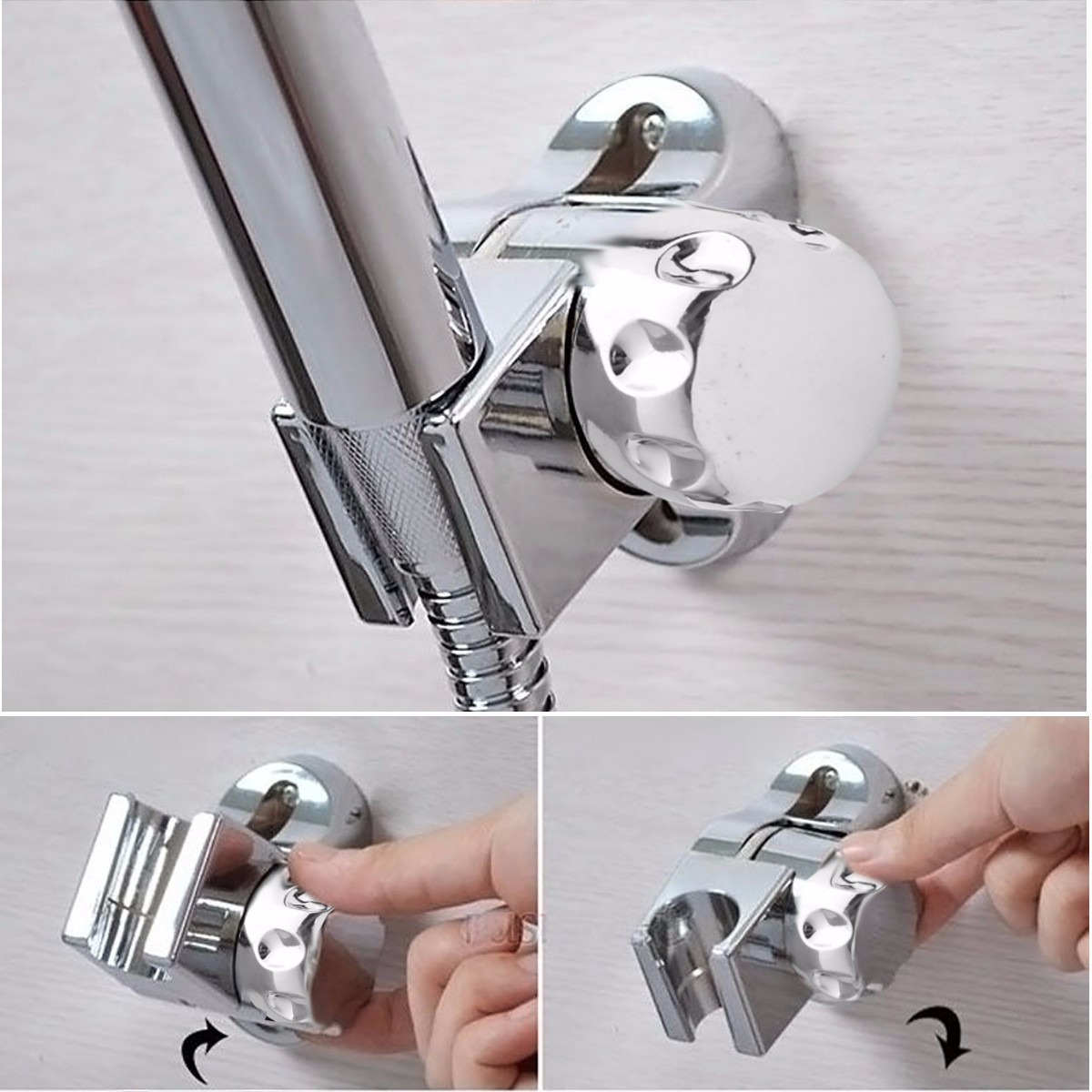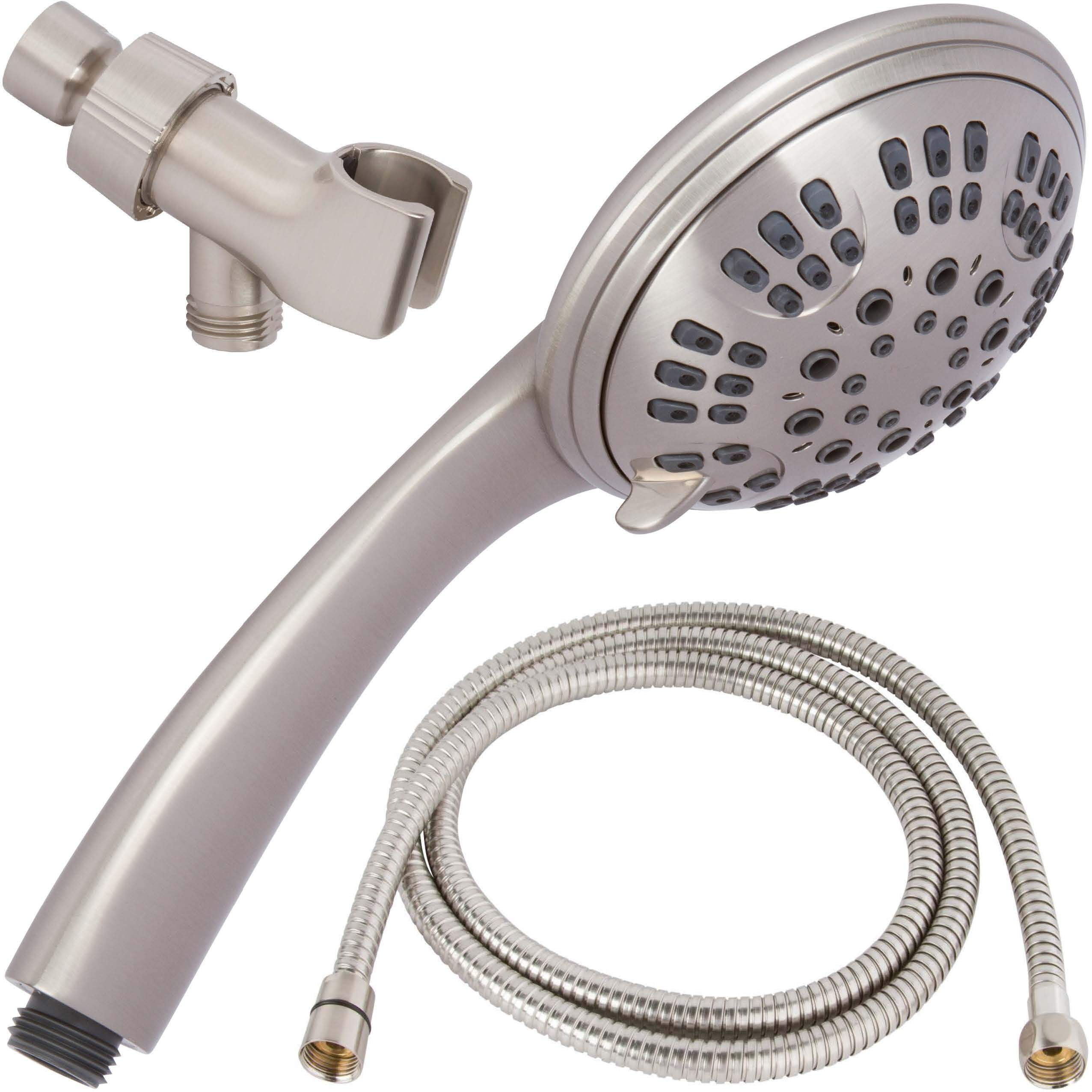Types of Bathroom Hand Shower Holders

Choosing the right hand shower holder can significantly enhance your bathroom experience, providing convenience and flexibility for showering. The type of holder you select will depend on your specific needs and preferences. Here, we’ll explore the different types of hand shower holders available, highlighting their advantages and disadvantages.
Types of Bathroom Hand Shower Holders
Hand shower holders are designed to provide a secure and adjustable mounting point for your hand shower. They come in various styles and materials, catering to different bathroom aesthetics and functional requirements. Here’s a breakdown of common types of hand shower holders:
| Type | Description | Advantages | Disadvantages |
|---|---|---|---|
| Fixed | Fixed hand shower holders are permanently mounted to the wall, providing a stationary position for your hand shower. They are typically made of metal or plastic and offer a secure and stable hold. | Easy to install and very affordable. | Lack of flexibility and adjustability. |
| Adjustable | Adjustable hand shower holders allow you to change the angle and height of your hand shower. They often feature a swivel or tilting mechanism, enabling you to direct the water flow as needed. | Provides flexibility and allows for precise water flow direction. | May be more expensive than fixed holders. |
| Sliding | Sliding hand shower holders offer both height and angle adjustability. They typically feature a vertical track that allows you to move the hand shower up and down. | Provides maximum flexibility and convenience, allowing you to adjust the showerhead to different heights and angles. | May be more complex to install and potentially more expensive than other types. |
Features to Consider When Choosing a Bathroom Hand Shower Holder

Choosing the right hand shower holder can elevate your bathroom experience, ensuring a comfortable and efficient showering routine. It’s not just about aesthetics; functionality plays a crucial role. Let’s delve into the key features that will guide your selection.
Material and Finish
The material and finish of your hand shower holder significantly impact its durability, aesthetics, and resistance to corrosion. Here’s a breakdown of popular options:
- Brass: Known for its durability and resistance to corrosion, brass is a popular choice for bathroom fixtures. Its elegant finish complements various bathroom styles. Brass is often coated with chrome, nickel, or other finishes to enhance its appearance and corrosion resistance.
- Stainless Steel: Stainless steel is another robust material offering excellent resistance to rust and corrosion. It’s known for its modern aesthetic and low maintenance requirements. However, stainless steel can be more expensive than brass.
- Plastic: Plastic hand shower holders are budget-friendly and lightweight. They are available in various colors and styles, making them a versatile option. However, plastic is less durable than brass or stainless steel and may not withstand high temperatures or harsh chemicals.
Spray Patterns
Hand shower holders offer a range of spray patterns, each catering to different showering needs. Consider the following options:
| Spray Pattern | Description | Uses | Water Pressure |
|---|---|---|---|
| Rain | A wide, gentle spray, simulating a rainfall experience. | Relaxing showers, providing a spa-like ambiance. | Low to medium. |
| Massage | A powerful, focused spray with pulsating jets. | Deep tissue massage, targeting specific areas of the body. | Medium to high. |
| Full Coverage | A wide, even spray covering a large area. | General showering, offering thorough coverage. | Low to medium. |
| Power Spray | A concentrated, powerful spray ideal for rinsing off shampoo or soap. | Thorough rinsing, cleaning, or removing stubborn dirt. | High. |
Water Pressure
Water pressure is a critical factor to consider, as it directly affects the showering experience. Higher water pressure provides a more forceful spray, while lower pressure offers a gentler experience. Here’s a breakdown of common water pressure settings:
- Low Water Pressure: Provides a gentle, soothing spray, ideal for those with sensitive skin or a preference for a calming shower. However, low water pressure may not be suitable for rinsing off shampoo or soap effectively.
- Medium Water Pressure: Offers a balanced spray, suitable for most showering needs. It provides adequate pressure for rinsing off shampoo or soap while maintaining a comfortable experience.
- High Water Pressure: Delivers a forceful spray, ideal for rinsing off shampoo or soap quickly and effectively. However, high water pressure can be harsh on sensitive skin and may result in higher water consumption.
Installation and Maintenance of Bathroom Hand Shower Holders

Installing and maintaining a bathroom hand shower holder is a simple task that can be done by anyone with basic DIY skills. This guide provides step-by-step instructions for installation and troubleshooting, along with tips for ensuring your hand shower holder remains in top condition for years to come.
Installing a Bathroom Hand Shower Holder
To install a new hand shower holder, you’ll need a few basic tools, including a screwdriver, adjustable wrench, plumber’s tape, and a level. Here are the steps involved in the installation process:
1. Turn off the water supply. This is a crucial safety step to prevent any water damage during installation. Locate the shut-off valve for your water supply and turn it off.
2. Remove the old hand shower holder. Unscrew the old hand shower holder from the shower arm using an adjustable wrench. If the holder is stuck, you can try using a wrench with a rubber grip to prevent scratching the shower arm.
3. Clean the shower arm. Remove any debris or old sealant from the shower arm using a cloth and cleaning solution.
4. Wrap the shower arm with plumber’s tape. This helps to create a watertight seal between the shower arm and the new hand shower holder.
5. Install the new hand shower holder. Screw the new hand shower holder onto the shower arm, making sure it is securely tightened. Use a level to ensure the hand shower holder is straight.
6. Connect the hand shower. Attach the hand shower to the new hand shower holder.
7. Turn on the water supply. Carefully turn the water supply back on and check for any leaks.
8. Test the hand shower. Make sure the hand shower is working properly and that the water pressure is adequate.
Troubleshooting Common Issues
If you encounter any problems with your bathroom hand shower holder, here’s a step-by-step guide for troubleshooting common issues:
Leaks
- Check the connections. Leaks often occur at the connections between the hand shower holder, shower arm, and hand shower. Ensure all connections are securely tightened. If the connections are tight but still leaking, check for worn-out plumber’s tape or damage to the shower arm or hand shower holder. Replace any damaged parts.
- Inspect the O-rings. O-rings are small rubber rings that help create a watertight seal. If the O-rings are worn or damaged, they can cause leaks. Replace any damaged O-rings.
Low Water Pressure
- Check the showerhead. If the showerhead is clogged with mineral deposits, it can restrict water flow and cause low water pressure. Clean the showerhead using a vinegar solution or a commercial descaler.
- Check the water pressure in your home. Low water pressure can be a symptom of a problem with your home’s plumbing system. Contact a plumber to diagnose and fix the issue.
Faulty Spray Patterns
- Clean the showerhead. Mineral deposits or debris can clog the spray nozzles and affect the spray pattern. Clean the showerhead using a vinegar solution or a commercial descaler.
- Check the showerhead settings. Some showerheads have adjustable spray settings. Ensure the showerhead is set to the desired spray pattern.
Maintaining a Bathroom Hand Shower Holder
Proper maintenance is crucial for extending the lifespan of your hand shower holder. Here are some tips to keep your hand shower holder in top condition:
- Clean the hand shower holder regularly. Wipe down the hand shower holder with a damp cloth and mild cleaning solution to remove dirt, grime, and soap scum.
- Clean the showerhead regularly. Remove mineral deposits and debris from the showerhead by soaking it in a vinegar solution or using a commercial descaler. This will help to maintain optimal water pressure and prevent clogging.
- Inspect the connections regularly. Check for any loose or leaking connections. Tighten any loose connections and replace any damaged parts.
- Lubricate the moving parts. If your hand shower holder has any moving parts, lubricate them with silicone spray or lubricant to prevent squeaking and ensure smooth operation.
- Store the hand shower properly. When not in use, store the hand shower in a dry place to prevent rust and corrosion.
A bathroom hand shower holder can add versatility and convenience to your showering experience, but it’s important to consider the overall design of your bathroom. Natural light is crucial, and choosing the right window can make a huge difference in the ambiance and functionality of your space.
Check out this article for tips on finding the best type of window for your bathroom. Once you’ve got the perfect window, you can choose a bathroom hand shower holder that complements the style and enhances the overall feel of your bathroom.
A bathroom hand shower holder can be a great addition to any bathroom, especially if you have a shower stall. But if you’re dealing with a bathroom without a vent, you might find that moisture buildup becomes a problem. This is where a dehumidifier can come in handy.
If you’re looking for the best dehumidifier for a bathroom without a vent, check out this guide: best dehumidifier for bathroom without vent. A dehumidifier can help keep your bathroom dry and comfortable, making it easier to enjoy your new hand shower holder.